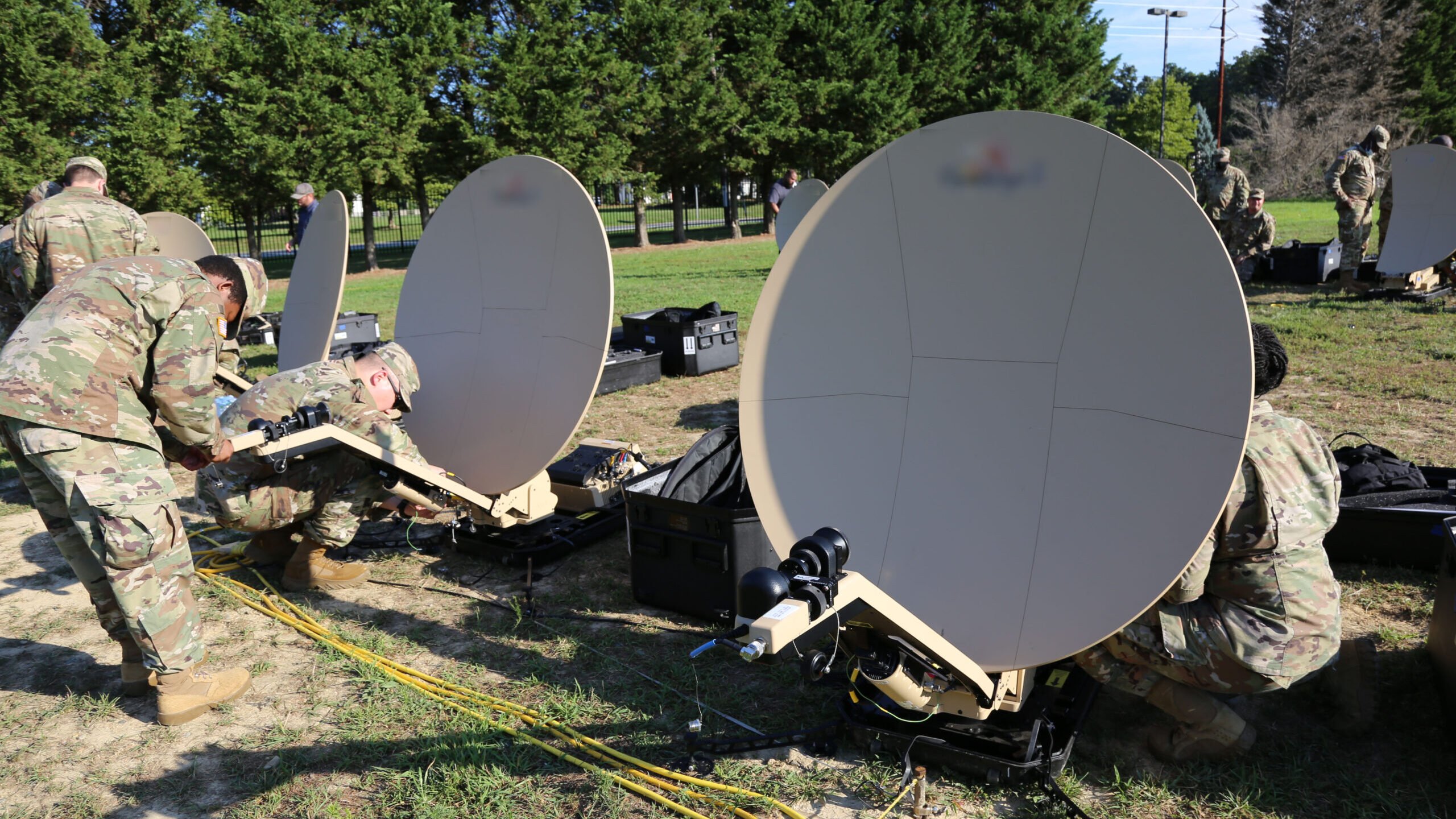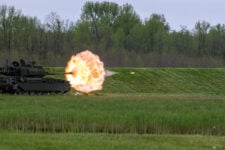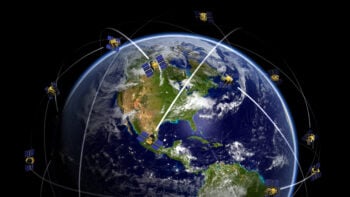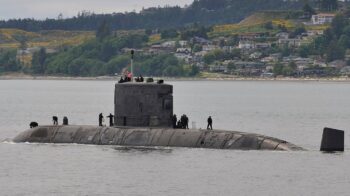
Soldiers from the Delaware Army National Guard 198th Expeditionary Signal Battalion-Enhanced (ESB-E) train on the Scalable Network Node, which is part of the unit’s modernized smaller, lighter, faster ESB-E equipment set, in New Castle Delaware, on August 9, 2022. (U.S. Army photo by Amy Walker, PM Tactical Network, PEO C3T Public Affairs)
NEW CASTLE, Del. — The Delaware National Guard’s 198th Expeditionary Signal Battalion (ESB) this month became the first Guard unit to train on the Army’s new small, modular network transport equipment package, meant to more rapidly deploy and maneuver signal formations across the battlefield.
The equipment set, called the Expeditionary Signal Battalion-Enhanced (ESB-E), is designed to be scalable to support different sized units in a variety of mission sets as command posts are put up and struck down faster than ever.
“As we look at ongoing operations that are taking place… We’re not going to have those command posts that are static,” Brig. Gen. Jeth Rey, director of the Network Cross-Functional Team, told reporters Aug. 9 during a media day in Delaware. “So what this does is allow us now to move and be more mobile on the battlefield and get out of the way [of] adversaries’ capabilities to take out our command post. So this is really going to enhance what we’re doing, making us lighter, mobile, less detected.”
The Army’s ESBs previously were fielded with increment one of the Warfighter Information Network-Tactical (WIN-T), the Army’s tactical network “backbone.” The kits were bigger and heavier, and the Army wanted to get more resiliency and mobility in their network.
Previous kits “took a little while to set up,” Col. Shane Taylor, the program manager for tactical networks in the Army’s Program Executive Office for Command, Control, Communications-Tactical (PEO C3T), told reporters. “It could take us days to get the network fully up and going and burned in, if not longer, depending on our comfort with it. And then to tear it down took almost as long.”
RELATED: Ukraine Invasion ‘Reinforcing’ Army’s Work On Secure Networks, Comms
The Army wanted to move away from the larger kit in favor of something that could get built and torn down in under 30 minutes. As more commercial firms moved into the defense space, the service found opportunities to leverage new technologies to create a lighter kit.
The ESB-E upgraded communications package includes equipment like a scalable network node antenna and baseband, terrestrial transmission line-of-sight radios, transportable tactical command communications and the “command post wireless small form factor.”
“In the past when you stood up a [tactical command post]… or any of those other [command post] type of formations, you had to run cables. Lots and lots of cables. Those could take time,” Taylor said. “We’ve added a small form factor secure WiFi capability, and what we’ve seen units do with that, and that’s not unique to ESB, but what we’ve seen unique to that is they can actually get that WiFi capability up and going and before they even get their structures up, the network can already be up and moving.”
RELATED: In Army, Worry Follows Senators’ Proposed Cuts To Network, Comms Upgrades: Official
As the Army fields the ESB-E, it’s incorporating soldier feedback in order to let the technology drive the requirements, as opposed to the requirements driving what technology the service procures.
Taylor said that previous ESB trainings also focused specifically on certain military occupational specialties so no one was cross-trained on the different elements of the kit, something the service wanted to change going into training with the 198th ESB.
“What we’ve seen as we progressed through this is everybody’s a user of everything,” he said. “And so for this training specifically… everybody’s getting training on everything. The unit agreed to a little bit more aggressive schedule… We added some signal theory upfront in the [point of instruction]. We normally don’t do that, but… a lot of folks haven’t been in school in a long time. Signal theory changes.”
Signal theory is the teaching of Army signal doctrine, meaning how signal is executed and employed. In today’s Army, signal soldiers are those who operate the network and provide network connectivity across the force.
Taylor added training on the actual kit is very fast and can be done in “literally a couple of hours.”
Maj. Gen. Tony Potts, the leader of PEO C3T, the agency responsible for the development of the kit and fielding the Army’s tactical network, told reporters the service had to figure out how to take something that’s “really quite complex” and simplify it for soldiers to use.
The ESB-E “tool suite” is also a critical element of the Army’s Capability Set 21, which as of June was already 70 percent completed. The kit is integrated onto different Stryker vehicle variants, Matty Meyer, the product manager for interoperability integration services, told reporters Aug. 9.
“We’re testing it out on different vehicle platforms right now to make sure that different units can be supported with the same networking technology,” Meyer said.
The Army also recently completed one phase of a planned two-phased operational assessment with the next set, Capability Set 23, with the 2nd Cavalry Regiment in Europe before the service starts fielding it to units next year, Meyer added.






















